Table of Contents
ToggleIn today’s fast-paced world, juggling tasks can feel like a circus act gone wrong. Enter administrative software—the unsung hero of productivity. Imagine a world where scheduling meetings doesn’t require a crystal ball and tracking expenses doesn’t involve a scavenger hunt through crumpled receipts. With the right tools, managing day-to-day operations becomes a breeze, leaving more time for what really matters: coffee breaks and office banter.
Overview of Administrative Software
Administrative software encompasses tools designed to improve office efficiency. Such tools assist in task management, time tracking, and communication within organizations. Tasks like scheduling meetings and managing calendars become easier with these solutions.
Many platforms integrate features for expense tracking and project management. Employees can effortlessly log expenses, ensuring accurate financial oversight. Enhanced collaboration tools further allow team members to share documents and updates in real-time.
User-friendly interfaces are a hallmark of effective administrative software. These designs promote usability among staff with varying technical skills. Training time decreases as individuals become familiar with intuitive navigation.
Reports generated by administrative software can provide valuable insights. Businesses gain data-driven perspectives on productivity trends and resource allocation. These analytics empower decision-makers to adjust strategies for optimal results.
Cloud-based administrative solutions facilitate access from any location. Remote teams can collaborate seamlessly, accessing necessary tools and information instantly. This flexibility fosters a responsive work environment, accommodating various business needs.
Cost-effectiveness emerges as a key advantage of using administrative software. Organizations can streamline workflows, reducing operational costs and improving overall efficiency. Investing in such technology often yields significant returns in productivity and employee satisfaction.
Adopting administrative software not only simplifies day-to-day tasks but also enhances organizational management. Proactive solutions lead to a more engaged workforce, allowing individuals to focus on strategic initiatives rather than mundane processes.
Key Features of Administrative Software
Administrative software includes essential tools that improve efficiency and productivity in modern workplaces. These systems offer various features tailored to meet organizational needs.
User Interface and Experience
A clean user interface enhances navigation and reduces time spent on training. Effective administrative software presents intuitive layouts that accommodate users with different technical skills. Clear labeling of features simplifies access to tools. Users appreciate responsive designs that adjust to various devices, ensuring a seamless experience whether on desktops or mobile devices. Simplified workflows lead to higher engagement among team members, as they focus more on tasks rather than struggling with the software itself.
Integration Capabilities
Integration capabilities are crucial for optimizing workflows. Many administrative software platforms connect effortlessly with existing tools and applications. Smooth integration with popular productivity suites enhances data synchronization across systems. Users benefit from centralized access to essential information without switching between multiple applications. Seamless communication between departments improves collaboration and reduces redundancy, ultimately streamlining processes. Organizations achieve better results by leveraging the full potential of their software ecosystem through thoughtful integration.
Benefits of Using Administrative Software
Administrative software offers significant advantages for organizations seeking to enhance productivity and streamline operations. Key benefits include increased efficiency and improved organization.
Increased Efficiency
Administrative software automates repetitive tasks, freeing employees to focus on high-value activities. By simplifying processes such as scheduling and invoicing, organizations experience faster turnaround times. These tools also facilitate real-time collaboration, enabling teams to communicate effectively, share updates, and make decisions promptly. Integrating various functions into one platform minimizes time spent switching between applications, leading to a smoother workflow. The elimination of manual data entry reduces errors and enhances accuracy, allowing teams to achieve goals more effectively. As a result, productivity naturally increases, supporting overall business growth.
Improved Organization
Administrative software enhances organization by centralizing information in a single location. Employees easily access documents and project data, making it simpler to track progress and deadlines. This centralization boosts accountability, as team members can monitor task assignments and status updates transparently. Customizable dashboards provide users with a personalized view of priorities, ensuring that essential tasks remain top of mind. Additionally, the ability to generate reports and analytics helps decision-makers identify areas for improvement. With organized data at their fingertips, organizations can allocate resources strategically and streamline administrative processes, promoting a more structured work environment.
Popular Administrative Software Options
Numerous administrative software options cater to various organizational needs. Each platform offers unique features that address specific challenges in productivity and efficiency.
Comparison of Leading Software
Several leading software solutions dominate the administrative software market. Asana excels in project management, providing visual task tracking for teams. Trello offers a simple board system that enhances collaboration between users. Monday.com allows customization of workflows, ensuring flexibility for diverse projects. Slack streamlines communication, combining messaging with file sharing for real-time discussions. ExpenseZen simplifies expense reporting with automated tracking features, improving financial oversight. When comparing these options, organizations can focus on particular features that align with their operational requirements, optimizing usefulness.
User Reviews and Ratings
Users consistently highlight the effectiveness of administrative software in improving daily operations. Ratings on platforms like G2 and Capterra reveal high satisfaction levels for software such as ClickUp due to its versatility in task management and reporting capabilities. Basecamp receives accolades for its intuitive interface, promoting easy adoption among teams. Feedback often emphasizes the role of customer support in enhancing the user experience, with companies providing comprehensive resources for troubleshooting. Evaluating user reviews helps potential buyers make informed decisions by understanding practical applications and common challenges within various software options.
Challenges and Considerations
While administrative software offers many benefits, users encounter several challenges during implementation and ongoing maintenance.
Implementation Issues
Complexity in setup poses initial challenges. Many organizations find it difficult to integrate new software with existing systems. Custom configurations may require extensive time and resources. Training staff also adds another layer of complexity; varying technical skill levels among employees can hinder adoption. Additionally, resistance to change often arises, leading to decreased user engagement. Prioritizing proper planning and resource allocation is crucial for a smoother transition.
Ongoing Maintenance
Continuous support and updates demand attention. Regular software updates ensure enhanced security and functionality, but they often require IT resources for installation. Moreover, ongoing user support must address questions and issues promptly to maintain productivity. Data management also presents challenges: ensuring data accuracy and compliance with regulations can be labor-intensive. Organizations benefit from allocating staff specifically for user feedback, allowing them to adapt and improve software usage over time. Prioritizing these maintenance tasks prevents potential disruptions in workflow.
Adopting administrative software can significantly transform how organizations manage their daily operations. By streamlining tasks and enhancing collaboration, these tools empower teams to focus on what truly matters. The flexibility and user-friendly interfaces of modern solutions make them accessible to everyone, regardless of technical skill.
As companies navigate the challenges of a fast-paced environment, the right administrative software can lead to improved efficiency and productivity. With features that promote effective communication and data management, organizations can adapt to changing needs while maintaining a structured workflow. Investing in these solutions not only simplifies processes but also fosters a more engaged and motivated workforce.






